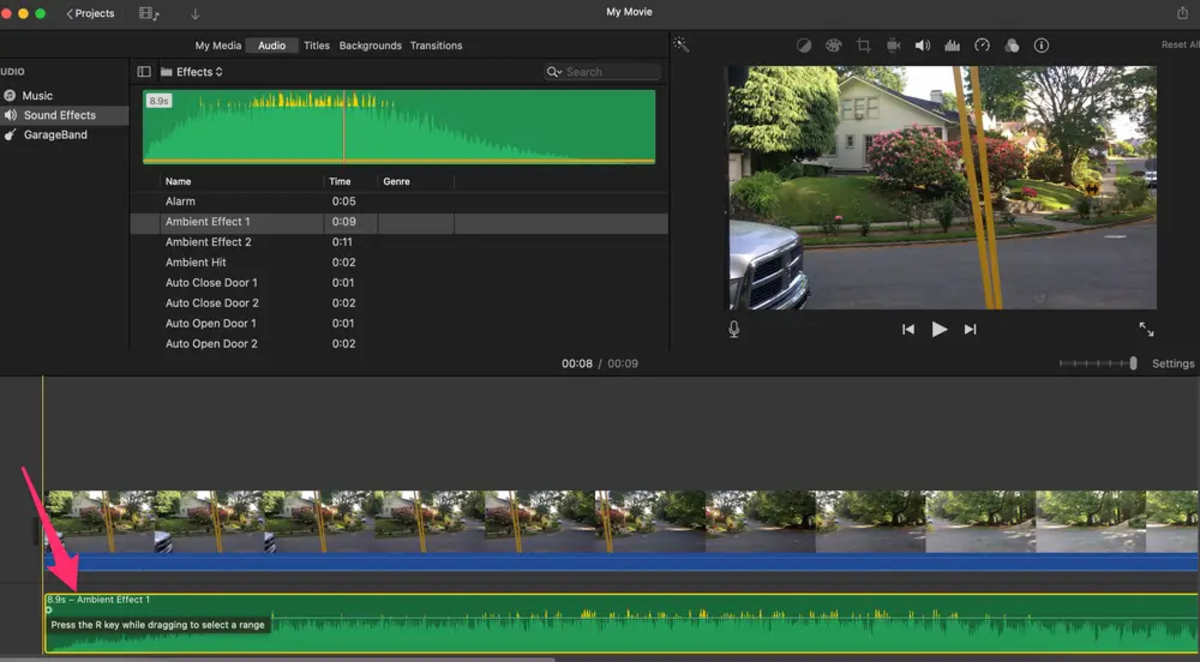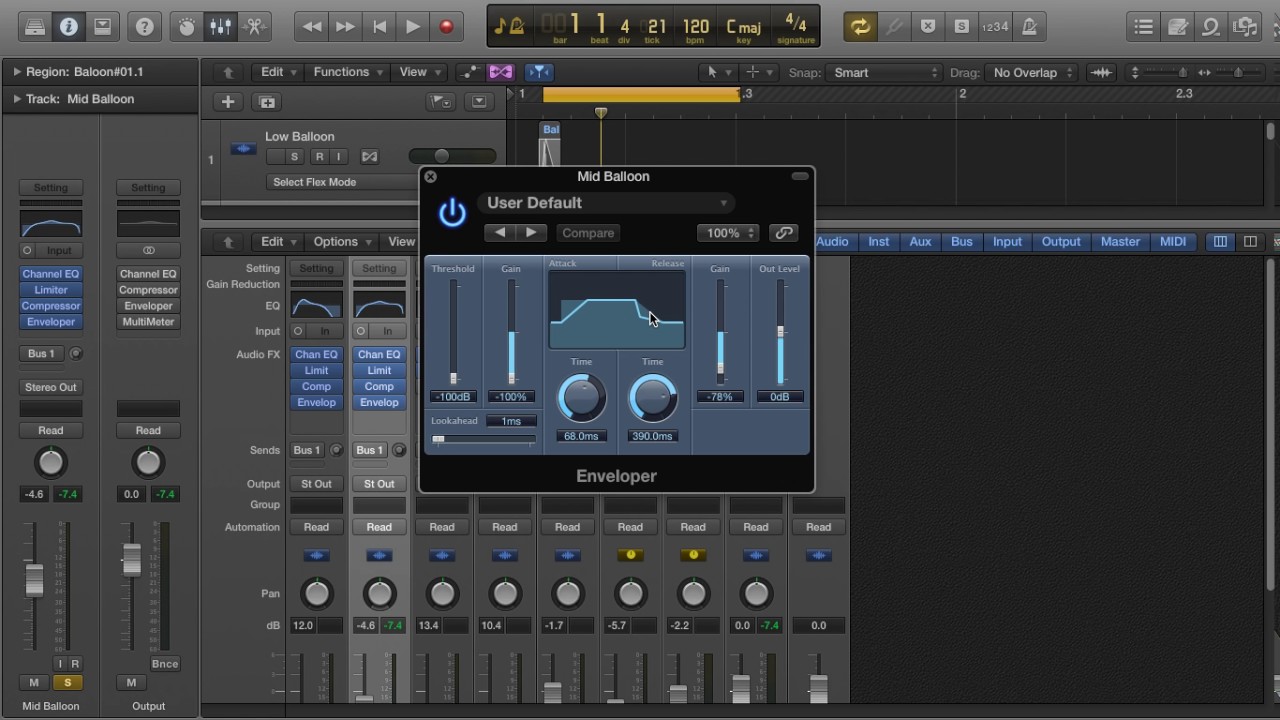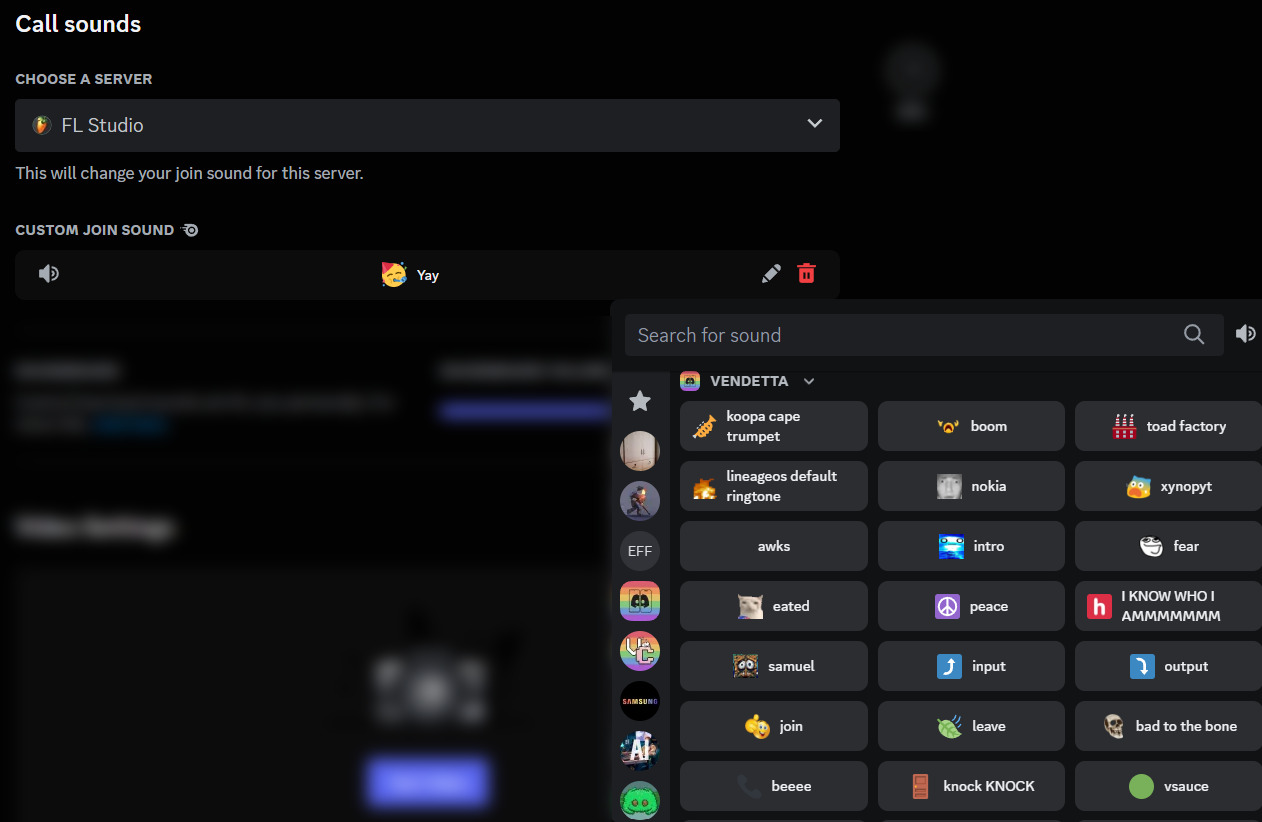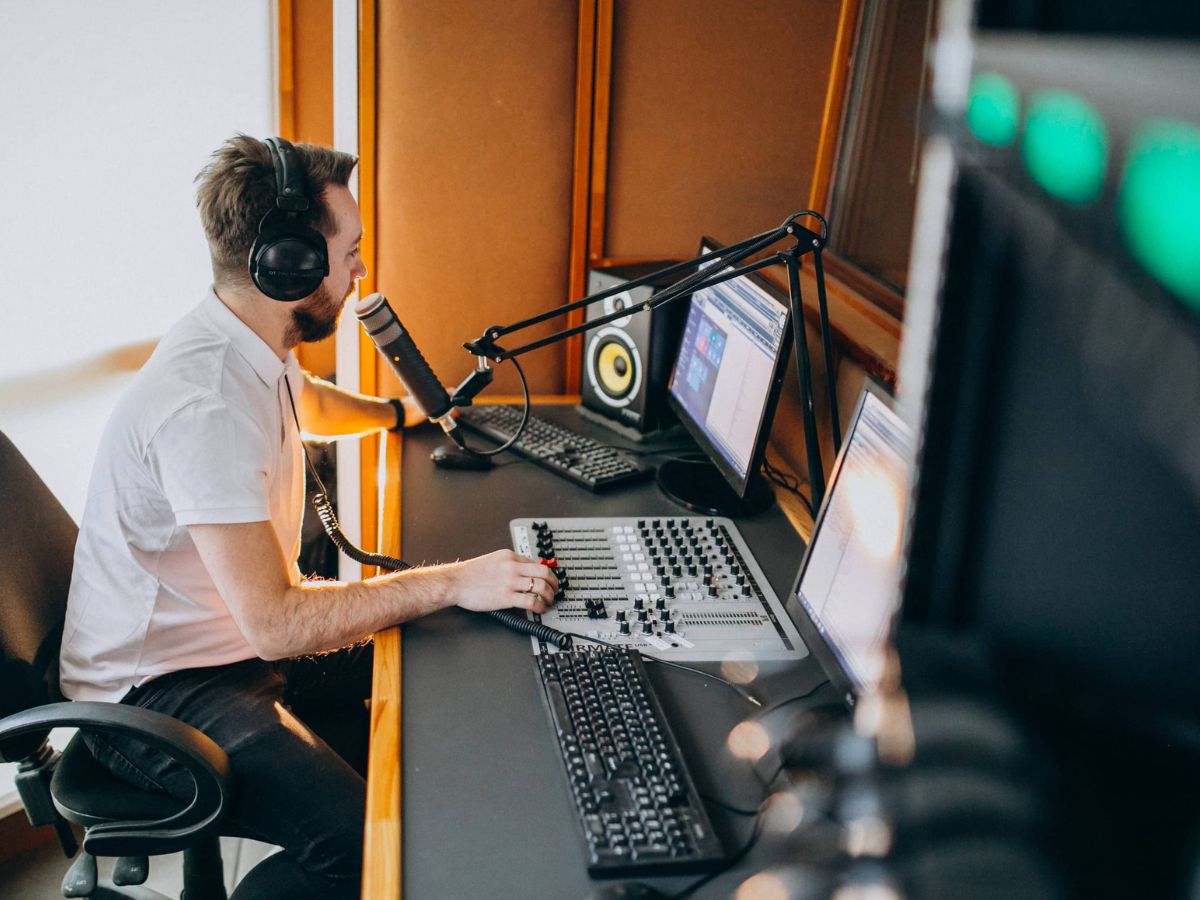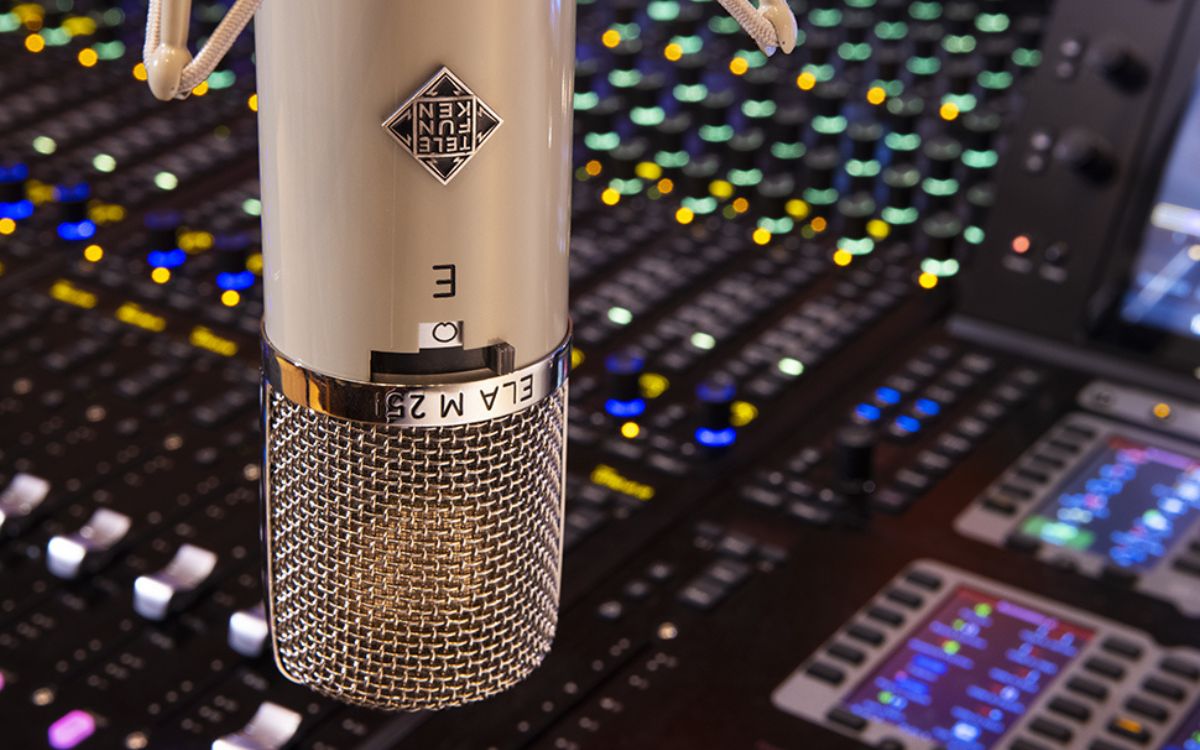Home>Production & Technology>Sound Effects>How To Obtain Sound Effects For Animations
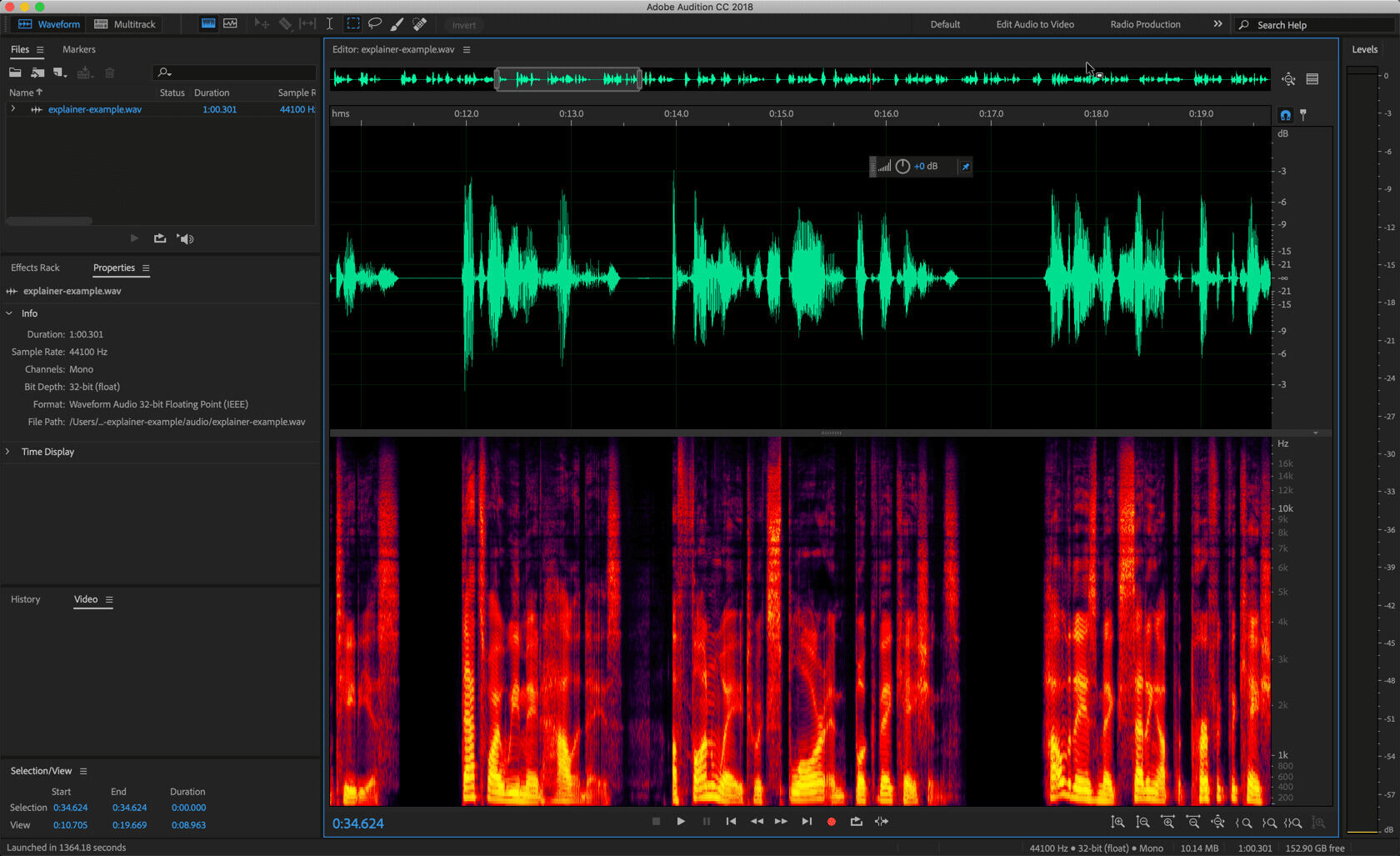

Sound Effects
How To Obtain Sound Effects For Animations
Modified: January 22, 2024
Learn how to find and use high-quality sound effects for your animations. Enhance the audio experience of your projects with our step-by-step guide on obtaining the perfect sound effects.
(Many of the links in this article redirect to a specific reviewed product. Your purchase of these products through affiliate links helps to generate commission for AudioLover.com, at no extra cost. Learn more)
Table of Contents
Introduction
Sound effects play a crucial role in enhancing the overall experience of animations. Whether it’s a cartoon, a video game, or a full-length movie, the right sound effects can bring the visuals to life and create a truly immersive environment for the audience. From the subtle sound of footsteps to explosive blasts and magical spells, sound effects add depth, texture, and emotion to the animated world.
In the world of animations, sound effects serve various purposes. They not only help to convey the action and movement on screen but also provide important cues for character expressions, environmental elements, and the overall mood of the scene. A well-chosen sound effect can make a funny scene even funnier, intensify the suspense in a thrilling moment, or enhance the beauty of a visually stunning sequence.
With the increasing demand for high-quality animations across various platforms, it has become more important than ever to have a wide array of sound effects to choose from. Whether you are an animator, a game developer, or a filmmaker, obtaining the right sound effects is crucial for creating a captivating and memorable experience for your audience.
This article will explore different types of sound effects that are commonly used in animations, methods to obtain sound effects, and important considerations when choosing them. By gaining a deeper understanding of sound effects and how to acquire them, you will be equipped with the knowledge to elevate the quality of your animations and captivate your viewers.
Importance of Sound Effects in Animations
Sound effects are a vital component of animated content, playing a crucial role in creating a truly immersive and engaging experience for the audience. Here are some key reasons why sound effects are essential in animations:
- Enhancing Realism: Sound effects bring added realism to animations by recreating familiar sounds from the real world. From the rustling of leaves to the chirping of birds, these auditory cues help the audience connect with the visuals and make the animated world feel more authentic.
- Conveying Emotion: Sound effects have the power to evoke and amplify emotions in the viewers. Whether it’s the joyful laughter of characters, the ominous rumble of thunder, or the exhilarating roar of a car engine, the right sound effect can heighten the emotional impact of a scene, making it more powerful and memorable.
- Adding Depth and Texture: Sound effects add depth and texture to the visuals, making the animated world feel more rich and dynamic. By incorporating a variety of sound effects, animators can create a multi-dimensional audio landscape that immerses the viewers and enhances their overall viewing experience.
- Guiding Attention: Sound effects can guide the viewer’s attention to specific elements within a scene. For example, the sound of a door creaking can draw the audience’s focus to a character entering a room. By strategically placing sound effects, animators can direct the viewer’s attention and enhance the storytelling aspect of their animations.
- Creating Atmosphere: Sound effects play a crucial role in establishing the atmosphere and setting the mood of a scene. Whether it’s a serene nature landscape or a bustling city street, the ambient sounds and environmental cues help to transport the audience into the world of the animation, enhancing the overall immersion and storytelling.
Without the presence of sound effects, animations can feel flat and lifeless. The absence of auditory cues removes an important layer of engagement and immersion, making the visuals less impactful. By incorporating well-designed sound effects, animators can captivate the audience, elevate the production value of their animations, and create a memorable viewing experience that lingers long after the animation is over.
Types of Sound Effects for Animations
There are various types of sound effects that animators can use to enhance their animations. Each type serves a specific purpose and helps to bring different elements of the animated world to life. Here are some common types of sound effects used in animations:
- Environmental Sounds: These sound effects mimic the sounds of the environment in which the animation is set. Examples include the sounds of wind, rain, birds chirping, traffic, and other ambient noises. Environmental sounds help to create a realistic and immersive setting for the animated world.
- Character Sounds: Character sounds include dialogue, voice acting, and character-specific sounds such as footsteps, grunts, and laughter. These sound effects give personality to the animated characters, making them more relatable and believable.
- Action Sounds: Action sound effects are used to enhance the impact of physical movements and actions. They can include sounds like punches, explosions, gunshots, sword clashes, and other action-related noises. Action sounds add intensity and excitement to animated fight scenes, chase sequences, or any action-packed moments.
- Transitional Sounds: Transitional sounds are used to visually transition between scenes or moments in the animation. They can include sounds like whooshes, wipes, or other audio cues that complement the visual transitions, making them smooth and seamless.
- Special Effects: Special effects sounds add a touch of magic and fantasy to animations. They can include sounds like spells, mystical creatures, energy blasts, or any other sound effects that enhance the fantastical elements of the animated world.
It’s important for animators to choose the right combination of sound effects to create a cohesive and immersive audio experience. By carefully selecting and layering these different types of sound effects, animators can bring their animations to life and engage the audience on a deeper level.
Methods to Obtain Sound Effects
When it comes to obtaining sound effects for animations, there are several methods available to animators. The choice of method depends on factors such as budget, time constraints, and the specific needs of the project. Here are four common methods for obtaining sound effects:
- Online Sound Libraries: Online sound libraries offer a vast collection of pre-recorded sound effects that animators can browse and download. These libraries often have a wide range of sounds available, from everyday environmental sounds to specialized action and character effects. Some popular online sound libraries include SoundBible, Freesound, and ZapSplat. Animators can search for specific sounds or explore categories to find the perfect sound effects for their animations. Online sound libraries are a convenient and cost-effective method to obtain sound effects.
- Creating Sound Effects In-House: Animators can also choose to create their own sound effects by recording and manipulating audio in-house. This method allows for more customization and control over the sound design, as animators can tailor the effects to perfectly fit their animations. In-house sound effects can be created using everyday objects, musical instruments, or even through vocal recordings. Additionally, sound editing software like Audacity or Adobe Audition can be used to fine-tune and polish the recorded sounds.
- Hiring a Sound Designer: For more complex animations or projects with specific sound requirements, animators may opt to hire a professional sound designer. Sound designers are skilled in creating custom sound effects that align with the animation’s style and vision. They can work closely with the animators to understand their needs and bring the animations to life through unique and tailored sound effects. Hiring a sound designer can be a pricier option, but it ensures high-quality and customized sound design for the animation.
- Free Sound Effect Resources: There are also various websites and platforms that offer free sound effects for animations. These resources often include a selection of high-quality sounds that can be used in personal or commercial projects. Some popular free sound effect resources include Freesound, SoundEffects+, and Sonniss. Animators can browse these platforms to find suitable sound effects without breaking their budget.
Ultimately, the method chosen to obtain sound effects depends on the specific needs and constraints of the animation project. By exploring these different methods, animators can find the ideal approach to acquire the right sound effects and enhance the overall quality of their animations.
Online Sound Libraries
Online sound libraries are a valuable resource for animators to obtain a wide range of pre-recorded sound effects. These libraries offer an extensive collection of sounds, ranging from everyday ambient noises to specific action and character effects. Here are some key benefits and considerations of using online sound libraries:
Benefits:
- Convenience and Accessibility: Online sound libraries are easily accessible from anywhere with an internet connection. Animators can browse, preview, and download sound effects at their convenience, saving time and effort in searching for the right audio assets.
- Wide Variety of Sounds: Sound libraries often have a vast selection of sound effects, ensuring that animators can find the perfect match for their animations. Whether they need sounds for nature environments, character movements, or futuristic technology, online sound libraries typically have a diverse range of options available.
- Cost-Effectiveness: Many online sound libraries offer free or budget-friendly options, making it an affordable choice for animators with limited resources. While there can be premium sound packs for purchase, there are often plenty of high-quality free sound effects to choose from.
- Easy Search and Filtering: Online sound libraries usually provide search and filtering options to help animators narrow down their choices. Animators can search for specific keywords or browse through categories and tags to find relevant sound effects quickly.
- Licensing and Usage Rights: Online sound libraries typically provide information on the licensing and usage rights for each sound effect. This ensures that animators can select sound effects that align with the project’s requirements, whether it’s for personal use or commercial distribution.
Considerations:
- Quality Control: While online sound libraries offer a vast selection of sound effects, not all of them may meet the expected quality standards. It is important for animators to review and test the sound effects before incorporating them into their animations to ensure they align with the desired level of quality.
- Uniqueness: Since online sound libraries are accessible to a wide range of users, some sound effects may be used frequently and lack uniqueness. Animators who prioritize originality may need to spend more time searching or consider creating custom sound effects to set their animations apart.
- Compatibility: Animators should consider the compatibility of the sound effects with their chosen animation software or editing tools. It is essential to ensure that the sound effects are available in formats compatible with the software being used.
- Revision or Updates: Occasionally, sound libraries may make updates or revisions to their collection, which can result in changes to or removal of certain sound effects. Animators should keep this in mind when relying on specific sound effects from an online library and have a contingency plan in case an effect becomes unavailable.
Overall, online sound libraries provide a convenient and cost-effective solution for animators to source a wide variety of sound effects. With proper consideration and testing, these libraries can become valuable resources in enhancing the audio experience of animations.
Creating Sound Effects In-House
Creating sound effects in-house allows animators to have full control over the audio design of their animations. By recording and manipulating audio themselves, animators can customize the sound effects to perfectly fit the visuals and narrative of their animations. Here are some key considerations and benefits of creating sound effects in-house:
Considerations:
- Equipment and Setup: Animators need to ensure they have the necessary equipment and setup to record high-quality audio. This may include a microphone, recording software, and a suitable recording environment that minimizes background noise and enhances sound quality.
- Sound Editing Skills: Creating sound effects in-house requires some level of sound editing skills. Animators should be familiar with basic audio editing techniques, such as manipulating pitch, volume, and timing, to achieve the desired effect.
- Time and Resources: Creating sound effects in-house can be a time-consuming process, especially for complex or layered effects. Animators need to allocate sufficient time and resources for recording, editing, and fine-tuning the sound effects to ensure their quality.
- Object Availability: In-house sound effects rely on the availability of suitable objects or materials to create specific sounds. Animators may need to get creative and think outside the box to find objects or ways to generate the desired sound effects.
Benefits:
- Customization: Creating sound effects in-house allows animators to tailor the audio to the specific needs of their animations. This level of customization helps to create a seamless integration between the visuals and sound, enhancing the overall impact and immersion.
- Originality: By recording their own sound effects, animators can ensure a unique and original audio experience for their animations. In-house sound effects add a personal touch to the animations, making them stand out and creating a memorable viewing experience.
- Cost-Effectiveness: Creating sound effects in-house can be a cost-effective option, especially for animators with limited budgets. With the right equipment and skills, animators can produce professional-quality sound effects without the need to purchase or license pre-made assets.
- Flexibility and Experimentation: In-house sound design allows animators to experiment with different techniques and approaches to achieve desired effects. Animators have the freedom to iterate and fine-tune the sound effects until they achieve the desired result, giving them creative control over the entire audio design process.
Creating sound effects in-house gives animators the opportunity to be hands-on with the audio design of their animations. With the right equipment, skills, and time investment, animators can create unique, customized sound effects that perfectly complement their visuals and elevate the overall quality of their animations.
Hiring a Sound Designer
For animators seeking a professional and specialized approach to sound design, hiring a sound designer can be an excellent option. Sound designers are skilled professionals who have extensive experience in creating custom sound effects that align with the vision and style of the animation. Here are some key considerations and benefits of hiring a sound designer:
Considerations:
- Budget: Hiring a sound designer may involve a financial investment, as their expertise and specialized services come at a cost. Animators should consider their budget and the importance of high-quality, customized sound effects when deciding to hire a sound designer.
- Collaboration and Communication: Working with a sound designer requires effective collaboration and communication. Animators should be prepared to provide clear instructions, share their vision, and provide feedback throughout the sound design process to ensure that the desired audio aesthetics are achieved.
- Schedule and Deadlines: Hiring a sound designer means incorporating their availability and schedule into the animation production timeline. Animators should plan accordingly and establish clear deadlines and milestones for sound design deliverables.
Benefits:
- Expertise and Specialization: Sound designers are professionals with specialized knowledge and skills in creating high-quality sound effects. Their expertise in audio production techniques, sound libraries, and sound editing software allows them to bring the animation to life with exceptional audio design.
- Customized Sound Effects: Hiring a sound designer ensures that the sound effects are custom-tailored to the specific needs of the animation. The sound designer works closely with the animator to understand the vision and style of the animation, creating unique, cohesive, and immersive soundscapes.
- High-Quality Sound Production: Sound designers have access to professional-grade equipment and sound libraries, enabling them to create high-quality sound effects with precision and clarity. The resulting sound production enhances the overall audio experience, significantly elevating the animation’s production value.
- Time and Efficiency: By entrusting the sound design to a professional, animators can focus on other aspects of the animation production process. The sound designer takes care of the audio requirements, saving time and ensuring that the sound effects are delivered on schedule.
Hiring a sound designer brings an added level of professionalism and expertise to the sound design of animations. Collaborating with a sound designer allows animators to benefit from their specialized knowledge, creativity, and technical skills, resulting in a polished and immersive audio experience for the animation.
Free Sound Effect Resources
For animators with limited budgets or looking for cost-effective options, free sound effect resources can be a valuable solution. These platforms provide a wide range of high-quality sound effects that can be used in personal or commercial animation projects. Here are some key considerations and benefits of utilizing free sound effect resources:
Considerations:
- Licensing and Usage: Although sound effects from free resources are often available for use, animators should review the licensing terms and usage restrictions. Some sound effects may have specific requirements, such as attribution or limitations on commercial use. It is essential to comply with the licensing terms to avoid any legal issues.
- Quality Control: While free sound effect resources offer a wide selection, not all sound effects may meet the desired quality standards. Animators should carefully review and test the sound effects to ensure they align with the expected level of quality for their animations.
- Popularity and Uniqueness: Free sound effect resources are accessible to a large user base, which means that certain sound effects may be used frequently. Animators who seek originality may need to spend more time searching or consider customizing the sound effects to differentiate their animations.
Benefits:
- Cost-Effectiveness: Free sound effect resources provide a cost-effective option for animators, especially those with limited budgets. Animators can access a diverse range of sound effects without the need for purchasing or licensing expensive assets.
- Wide Variety of Sounds: Free sound effect resources often offer a comprehensive selection of sound effects that cater to various animation genres and styles. Animators can find sounds for character movements, environmental effects, actions, and more, allowing for creative flexibility and variety.
- Easy Accessibility: Free sound effect resources are typically easy to access and navigate. Animators can search for specific sounds, explore categories, and preview the effects before downloading, making it convenient to find the right sound effects for their animations.
- Community and Collaboration: Free sound effect resources often have a dedicated community of contributors and users. Animators can benefit from this community by sharing their work, collaborating with other creators, and even contributing their own sound effects for others to use.
Free sound effect resources are a valuable asset for animators looking for a cost-effective and diverse range of sound effects. With proper consideration of licensing terms and quality control, animators can find and utilize high-quality sound effects to enhance the audio experience of their animations without any financial burden.
Considerations for Choosing Sound Effects
Choosing the right sound effects for animations requires careful consideration to ensure they align with the visuals, narrative, and overall desired aesthetic of the animation. Here are some important factors to consider when selecting sound effects:
- Visual Context: Sound effects should complement and enhance the visuals of the animation. Consider the setting, environment, and actions happening on screen to choose sound effects that create a cohesive and immersive audio-visual experience.
- Mood and Emotion: Sound effects have the ability to evoke certain moods and emotions in the audience. Consider the desired emotional impact of a scene or sequence and choose sound effects that help to intensify or support that emotion.
- Consistency and Coherence: It’s important to maintain a consistent audio experience throughout the animation. Choose sound effects that have a similar tone, quality, and level of realism to create a coherent and unified sound design.
- Timing and Synchronization: Sound effects should be carefully timed and synchronized with the visuals to create a seamless and realistic audio-visual experience. Pay attention to the timing of actions, movements, and dialogue to ensure the sound effects align perfectly with the animation’s pacing and rhythm.
- Unique and Original: Consider incorporating unique or custom sound effects to make the animation stand out. This can involve creating in-house sound effects or utilizing lesser-known audio resources to add a distinctive touch to the animation’s audio design.
- Audience and Target Platform: Keep the intended audience and target platform in mind when choosing sound effects. Consider the age group, genre, and platform where the animation will be viewed to ensure the sound effects are appropriate and engaging for the intended viewers.
- Storyboard and Animatic: Review the storyboard or animatic of the animation to understand the pacing, storytelling, and key moments. This will help in selecting sound effects that enhance the narrative and effectively support the visual elements.
- Test and Iterate: It’s crucial to test the chosen sound effects within the animation to ensure they work well with the visuals. If necessary, make adjustments and iterate on the sound design to achieve the desired effect and overall cohesion.
Choosing sound effects requires a careful analysis of the animation’s visual context, emotional impact, and desired aesthetic. By considering these factors and testing the effects within the animation, animators can select sound effects that enhance the storytelling, immerse the viewer, and elevate the overall audio-visual experience.
Conclusion
Sound effects play a pivotal role in enhancing the overall experience and immersion of animations. From environmental sounds to character-specific effects, each sound effect contributes to the audio landscape of the animation, bringing the visuals to life and evoking emotions in the audience.
In this article, we explored the importance of sound effects in animations and discussed various types of sound effects that animators commonly use, including environmental sounds, character sounds, action sounds, transitional sounds, and special effects. We also explored different methods animators can use to obtain sound effects, such as online sound libraries, in-house creation, hiring a sound designer, and utilizing free sound effect resources.
When selecting sound effects for animations, it is crucial to consider the visual context, mood, consistency, timing, uniqueness, audience, and the purpose of the animation. By carefully choosing and integrating sound effects that align with these factors, animators can create a seamless and immersive audio-visual experience that captivates and engages the audience.
Whether animators decide to utilize online sound libraries for convenience, create sound effects in-house for customization, hire a sound designer for professional expertise, or leverage free sound effect resources for cost-effectiveness, it is important to prioritize quality, coherence, and the desired emotional impact of the animation.
In conclusion, sound effects are an integral part of animations, significantly contributing to the overall audio-visual experience. By carefully selecting and implementing the right sound effects, animators can elevate the quality of their animations, bring their creations to life, and leave a lasting impression on the audience.

